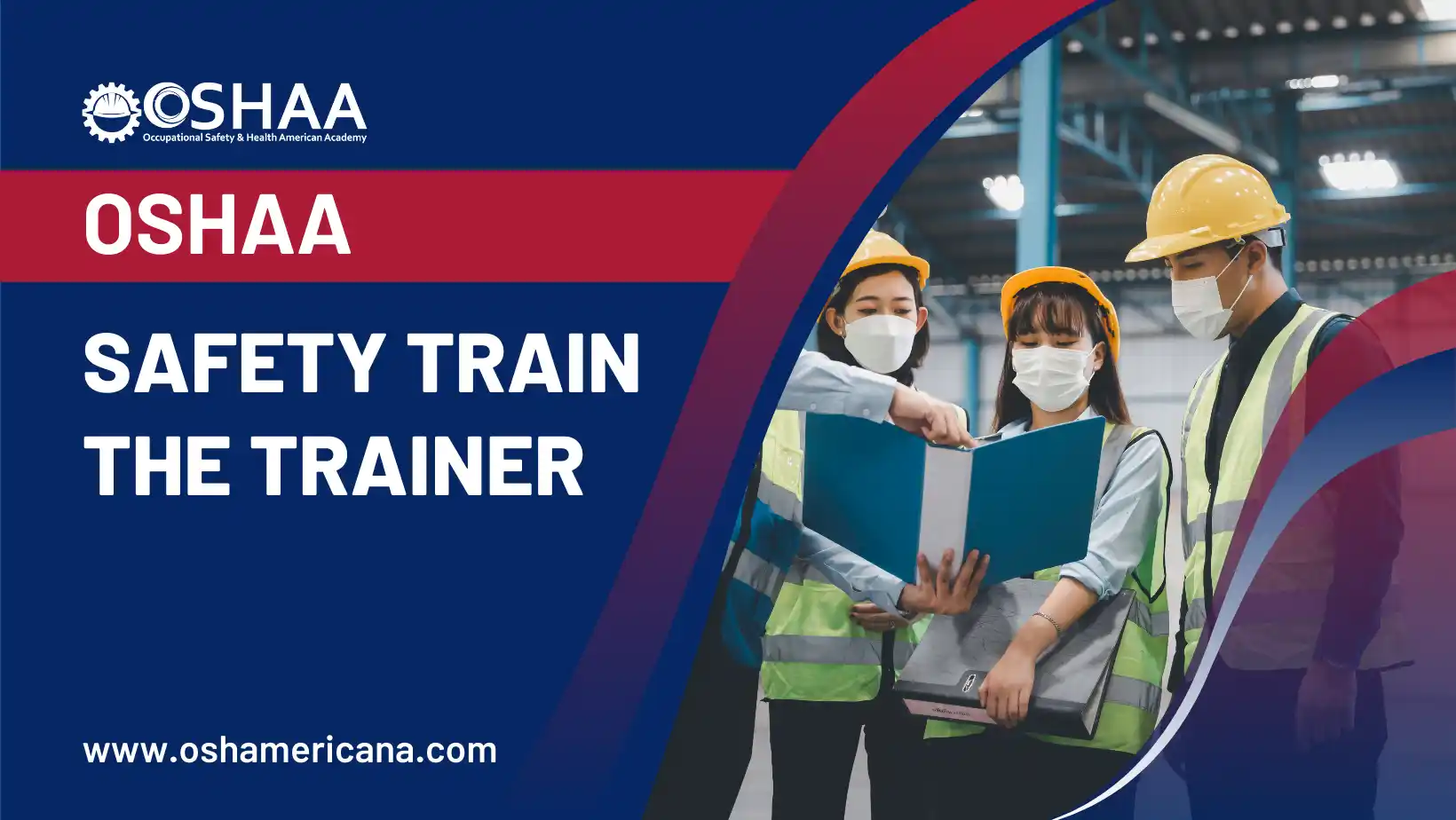Strengthen workplace safety with the OSHAA 30-Hours Health and Safety – Fire Safety Training and Planning, ensuring compliance and effective fire emergency response.
The OSHAA 30-Hours Health and Safety – Fire Safety Training and Planning is a comprehensive program designed to provide professionals with the knowledge, skills, and confidence to manage fire safety in the workplace. This course offers in-depth training on fire prevention, hazard identification, emergency response protocols, and fire protection systems. By focusing on both prevention and planning, it equips participants to design effective fire safety strategies, develop emergency procedures, and foster a proactive culture of safety across organizations.
Fire safety is one of the most critical elements of occupational health and safety. Non-compliance with OSHA regulations and international standards can result in devastating outcomes, including workplace injuries, fatalities, and significant legal and financial consequences. The OSHAA 30-Hours Health and Safety – Fire Safety Training and Planning addresses these challenges by preparing learners to recognize fire hazards, implement preventive measures, and respond effectively to fire emergencies. Through this training, organizations can ensure their workforce is well-prepared to act decisively, thereby minimizing risks and safeguarding lives and assets.
The OSHAA 30-Hours Health and Safety – Fire Safety Training and Planning course goes beyond theoretical instruction by emphasizing practical application in real-world scenarios. Participants develop a strong understanding of fire protection systems, evacuation procedures, and workplace fire safety regulations, ensuring they can apply this knowledge directly within their roles. By aligning with OSHA standards and international best practices, the OSHAA 30-Hours Health and Safety – Fire Safety Training and Planning not only enhances individual competencies but also helps organizations demonstrate their commitment to compliance and safety excellence.
For safety managers, supervisors, employers, and employees alike, this course provides the essential tools to prevent, manage, and mitigate fire-related risks. Investing in the OSHAA 30-Hours Health and Safety – Fire Safety Training and Planning is an investment in both people and organizational resilience. Graduates of this program emerge with the expertise to protect their teams, comply with regulations, and contribute to safer and more productive workplaces. By completing this course, participants position themselves as safety leaders equipped to handle emergencies with professionalism and efficiency, ensuring a fire-safe and compliant working environment.
OSHAA 30-Hours Health and Safety – Fire Safety Training and Planning
To enroll in the OSHAA 30-Hours Health and Safety – Fire Safety Training and Planning, learners are expected to meet the following criteria:
Age Requirement
- Applicants must be at least 18 years of age to register for the OSHAA 30-Hours Health and Safety – Fire Safety Training and Planning. This ensures that participants possess the maturity and responsibility required to engage with professional fire safety training and regulatory compliance standards.
Educational Background
- A minimum of a high school diploma or equivalent qualification is recommended for admission. While this is the basic requirement, individuals with higher education in occupational safety, engineering, or related fields will find the OSHAA 30-Hours Health and Safety – Fire Safety Training and Planning particularly advantageous, as it allows them to build upon existing knowledge and apply advanced fire safety principles effectively.
Work Experience
- Prior work experience is not mandatory for enrollment in the OSHAA 30-Hours Health and Safety – Fire Safety Training and Planning. However, professionals already working in safety management, facility operations, or supervisory roles may benefit significantly from the practical applications of this training. Beginners seeking to establish a foundation in fire safety and compliance are equally encouraged to participate.
English Proficiency
- Since the OSHAA 30-Hours Health and Safety – Fire Safety Training and Planning involves technical terminology, legal frameworks, and detailed course materials, participants must be able to read, write, and speak English fluently. Proficiency in English is essential to fully comprehend regulatory requirements, follow safety procedures, and apply knowledge effectively in real-world workplace scenarios.
Study Units
The Learning Outcomes of the Introduction to Fire Safety and Prevention course are carefully designed to provide participants with advanced knowledge, practical skills, and compliance expertise in fire safety management. This course equips learners with the ability to identify fire hazards, implement preventive measures, lead emergency responses, and align workplace practices with OSHA and international fire safety standards. By mastering these competencies, learners will develop strong safety leadership abilities and contribute to building a resilient safety culture within their organizations.
- Introduction to Fire Safety and Prevention
- Understand the basic principles of fire science, including ignition sources and fire behavior.
- Gain foundational knowledge of workplace fire safety aligned with OSHA standards.
- Learn the importance of integrating fire prevention strategies into everyday operations.
- Develop awareness of how fire safety contributes to employee well-being and organizational resilience.
- Fire Hazards and Risk Assessment
- Identify and evaluate potential fire hazards across diverse workplace environments.
- Conduct detailed fire risk assessments using internationally recognized methodologies.
- Apply risk control measures to eliminate or minimize hazards before they lead to incidents.
- Learn how to document and report hazards to support organizational compliance.
- Emergency Response and Evacuation Procedures
- Acquire the skills to develop and implement structured emergency response protocols.
- Understand the importance of evacuation planning, including routes, assembly points, and personnel accountability.
- Learn how to assign responsibilities during fire emergencies for effective coordination.
- Gain the ability to conduct post-incident evaluations to strengthen future preparedness.
- Fire Safety Equipment and Personal Protective Equipment (PPE)
- Understand the functions and limitations of various fire safety equipment, including extinguishers, alarms, and sprinklers.
- Learn proper inspection, maintenance, and usage techniques for fire protection equipment.
- Gain hands-on knowledge of PPE selection and its role in protecting workers during fire emergencies.
- Acquire the ability to train others in the correct use of fire safety tools and gear.
- Developing Fire Safety Plans and Policies
- Learn to design and implement comprehensive fire safety plans tailored to organizational needs.
- Align fire safety policies with OSHA regulations and international best practices.
- Develop strategies for communicating fire safety protocols across all levels of the organization.
- Understand how to review and update fire safety plans to reflect emerging risks and evolving standards.
- Legal and Regulatory Requirements for Fire Safety
- Gain in-depth knowledge of OSHA fire safety regulations and global compliance standards.
- Understand the legal obligations of employers and employees in maintaining workplace fire safety.
- Learn how compliance protects organizations from legal liabilities and financial penalties.
- Acquire the ability to integrate regulatory requirements into daily safety operations.
- Fire Drills, Training, and Continuous Improvement
- Develop the skills to plan, conduct, and evaluate fire drills effectively.
- Learn how to train employees to respond confidently and correctly during emergencies.
- Foster a culture of continuous improvement by incorporating feedback from drills and incidents.
- Gain the ability to measure organizational progress and enhance fire safety performance over time.
By completing the Introduction to Fire Safety and Prevention course, participants will be fully prepared to take on leadership roles in fire safety management. This course empowers learners to create safer workplaces, ensure regulatory compliance, and foster a proactive culture of fire prevention and emergency readiness. Graduates of this program will be equipped with the expertise and confidence to lead safety initiatives that protect both people and assets while promoting long-term organizational success.
The Introduction to Fire Safety and Prevention course provides a broad spectrum of benefits designed to meet the needs of professionals, organizations, and industries committed to workplace safety. Fire incidents remain one of the most significant risks in industrial, commercial, and even healthcare settings, leading to injuries, property damage, legal consequences, and operational disruptions. This course addresses these risks comprehensively by equipping learners with practical knowledge, regulatory compliance strategies, and leadership skills that directly contribute to safer work environments. With its global recognition and alignment with OSHA and international fire safety standards, the program not only reduces organizational vulnerabilities but also enhances professional development and career advancement for participants.
- Comprehensive Understanding of Fire Safety Fundamentals
Participants acquire an in-depth knowledge of fire dynamics, causes of fire, and how fire spreads in different environments. This foundation enables them to analyze hazards more effectively and implement proactive preventive strategies across industries. - Mastery of Regulatory Compliance and Legal Frameworks
The course ensures learners understand and apply OSHA regulations and international fire safety codes, protecting organizations from costly penalties, non-compliance risks, and potential legal liabilities while safeguarding employee welfare. - Strengthened Workplace Safety Culture
By embedding fire prevention principles and safe practices into daily operations, the course empowers participants to foster a culture where employees actively contribute to reducing fire risks and supporting overall workplace safety. - Proactive Hazard Recognition and Risk Control
Learners gain the ability to identify potential fire hazards, evaluate risks, and implement effective mitigation measures, reducing the likelihood of incidents and enhancing organizational resilience against emergencies. - Professional Growth and Career Advancement Opportunities
Completion of this program provides participants with globally recognized safety training credentials, improving employability and opening doors to higher-level positions in health and safety management, fire safety coordination, and regulatory compliance roles. - Enhanced Emergency Preparedness and Crisis Management
Participants are trained in designing and executing fire evacuation plans, ensuring they can lead teams safely and effectively during emergencies, thereby minimizing potential loss of life and organizational downtime. - Practical Competency in Fire Safety Equipment and PPE
The course develops skills in selecting, using, and maintaining fire extinguishers, suppression systems, alarms, and personal protective equipment, ensuring employees are well-prepared and confident in high-risk scenarios. - Fire Safety Plan Development and Policy Implementation
Learners are equipped to design, implement, and monitor fire safety policies tailored to their specific workplace environments, ensuring sustainability, consistency, and compliance with regulatory requirements. - Reduction of Organizational Costs and Losses
By preventing workplace fires and related accidents, the course contributes to significant savings in insurance claims, litigation costs, and operational interruptions, while enhancing business continuity and financial stability. - Development of Leadership and Safety Management Competence
Participants cultivate leadership qualities that enable them to manage fire safety programs, lead teams, and ensure compliance with safety objectives, positioning them as vital contributors to organizational success. - Improved Communication and Training Capabilities
The course prepares learners to effectively communicate safety strategies, conduct fire safety training sessions, and ensure that employees at all levels are fully aware of emergency protocols and safe practices. - Enhanced Worker Confidence, Well-being, and Productivity
Employees working in fire-safe environments feel secure and valued, which translates into improved morale, stronger team cohesion, and increased productivity across the organization. - Ongoing Improvement through Drills and Evaluations
The program emphasizes the importance of conducting regular fire drills, reviewing evacuation strategies, and updating fire safety protocols, ensuring that organizations continuously refine their safety measures. - Global Relevance and International Standards Alignment
Because the course aligns with OSHA and international fire safety frameworks, participants gain skills and certifications that are transferable and applicable across different industries and geographical regions. - Strengthening Organizational Reputation and Stakeholder Trust
Organizations that prioritize fire safety training demonstrate accountability, professionalism, and care for their workforce, improving their reputation in the marketplace and building trust among stakeholders, clients, and partners.
By completing the Introduction to Fire Safety and Prevention course, participants are equipped to lead safety initiatives with confidence, uphold strict compliance standards, and create workplaces where fire hazards are effectively managed. The course not only enhances individual career prospects but also supports organizations in reducing risks, saving costs, and reinforcing a culture of safety excellence. This training represents a vital investment in both human and organizational resilience, safeguarding lives, assets, and long-term operational success.
The Introduction to Fire Safety and Prevention course is designed for professionals across industries who are directly or indirectly responsible for maintaining safe working environments and ensuring compliance with fire safety standards. This program is highly relevant for individuals, organizations, and stakeholders committed to reducing fire hazards, safeguarding employees, and meeting OSHA and international safety regulations. By enrolling in this training, participants not only strengthen their professional knowledge but also contribute to global workplace safety initiatives and ongoing professional development.
- Safety Managers
- Play a central role in designing and implementing workplace safety programs, including fire prevention strategies.
- Gain advanced fire safety knowledge to manage compliance with OSHA and international standards.
- Acquire skills to develop fire safety plans and oversee risk assessments effectively.
- Strengthen operational efficiency by reducing fire-related incidents and ensuring a safe workplace.
- Operations Supervisors
- Supervise daily operations where fire safety measures must be enforced.
- Learn to identify potential fire hazards and implement corrective actions promptly.
- Gain the ability to train and guide teams on emergency response procedures.
- Ensure operational continuity by aligning fire safety practices with compliance requirements.
- HSE Officers
- Serve as key enforcers of occupational health, safety, and environmental regulations.
- Benefit from specialized fire safety training that enhances hazard recognition and prevention strategies.
- Strengthen skills in monitoring workplace compliance with OSHA fire safety standards.
- Support organizational risk management and improve overall safety culture.
- Emergency Response Teams
- Act as first responders during workplace fire incidents and emergencies.
- Develop critical knowledge of evacuation procedures, fire drills, and crisis management.
- Enhance preparedness through hands-on understanding of fire safety equipment and PPE.
- Contribute to minimizing workplace injuries and protecting organizational assets.
- Maintenance and Facility Managers
- Oversee the safety and functionality of building systems and infrastructure.
- Learn how to inspect, maintain, and improve fire protection systems and controls.
- Strengthen their ability to identify structural and operational fire risks.
- Ensure compliance with fire safety codes while maintaining efficient facility operations.
- Human Resource Professionals
- Manage policies that directly affect employee welfare and workplace safety culture.
- Gain insights into integrating fire safety awareness into organizational training programs.
- Support compliance by ensuring all employees are educated on fire safety protocols.
- Promote employee well-being by fostering a fire-safe workplace environment.
- Construction and Industrial Workers
- Work in high-risk environments where fire hazards are prevalent.
- Acquire practical knowledge of fire prevention, hazard control, and PPE use.
- Develop skills to follow safe work practices that align with OSHA standards.
- Enhance job performance and reduce risk of fire-related accidents.
- Healthcare Professionals
- Operate in environments where fire safety is critical to protecting vulnerable patients.
- Learn to implement fire prevention and emergency evacuation strategies in healthcare facilities.
- Gain skills to comply with healthcare-specific fire safety regulations.
- Contribute to patient safety and compliance with international health and safety standards.
- Educators and Training Coordinators
- Deliver fire safety awareness to employees, students, or industry professionals.
- Gain comprehensive knowledge to integrate fire safety into structured training programs.
- Acquire skills to conduct effective fire drills and awareness sessions.
- Support organizational compliance and instill long-term fire safety practices.
- Business Owners and Employers
- Hold responsibility for ensuring employee safety and compliance with OSHA standards.
- Learn to develop comprehensive fire safety policies tailored to organizational needs.
- Reduce legal, financial, and operational risks through improved fire prevention strategies.
- Build a strong safety culture that enhances organizational reputation and stakeholder trust.
The Introduction to Fire Safety and Prevention course equips professionals across diverse roles with the skills and knowledge needed to effectively prevent fire hazards, ensure compliance with safety regulations, and safeguard people and assets. By completing the OSHAA 30-Hours Health and Safety – Fire Safety Training and Planning program, participants gain globally recognized competencies that support career growth, operational excellence, and the development of safer workplaces. This training is not only an investment in individual professional development but also a strategic commitment to safety, compliance, and organizational resilience.







